Abstract
1 We have investigated the disposition and metabolism of sulphasalazine (SASP) in eight adults with and without inflammatory bowel disease. 2 SASP is poorly absorbed (less than 12%) and the half-time measured in the serum, 10.2 h, is probably the half-time of absorption and therefore an overestimate of the true half-time. The apparent volume of distribution is low (less than 9 l). Renal and biliary clearance rates are low (5.5 and 2.1 ml min-1 respectively) probably due to a high degree of protein binding. Of the absorbed SASP, two thirds is excreted in the urine and one third in the bile. 3 Most of the SASP reaches the colon and is there split by bacteria, forming sulphapyridine (SP) and 5-aminosalicylic acid (5-ASA). 4 SP is almost completely absorbed and, with its metabolites, is excreted in the urine (SP renal clearance rate 32.1 ml min-1). There is no enterohepatic recirculation. 5 Of the 5-ASA released in the colon at least 25% is absorbed and rapidly eliminated in the urine after acetylation. At least 50% is eliminated in the faeces. 6 There are no differences in disposition characteristics when comparing patients with and without inflammatory bowel disease but the metabolism of SASP is markedly reduced in patients taking antibiotics and after removal of the large bowel.
Full text
PDF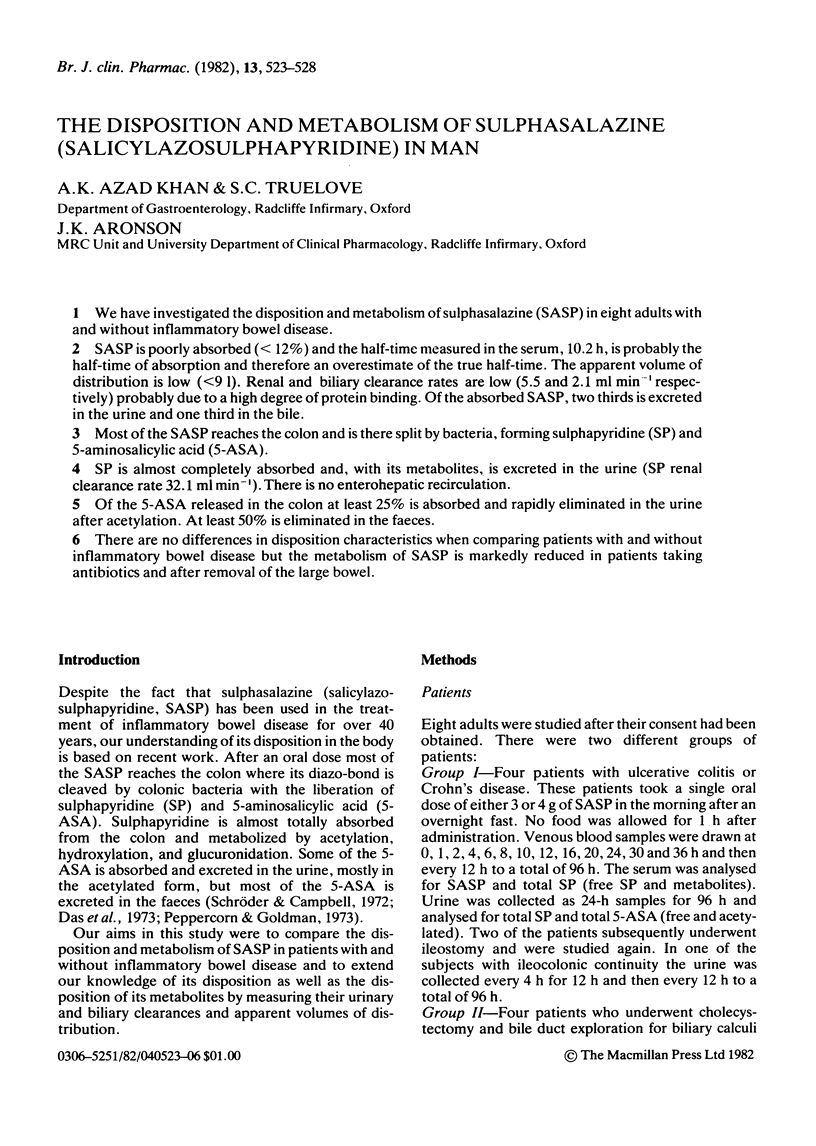
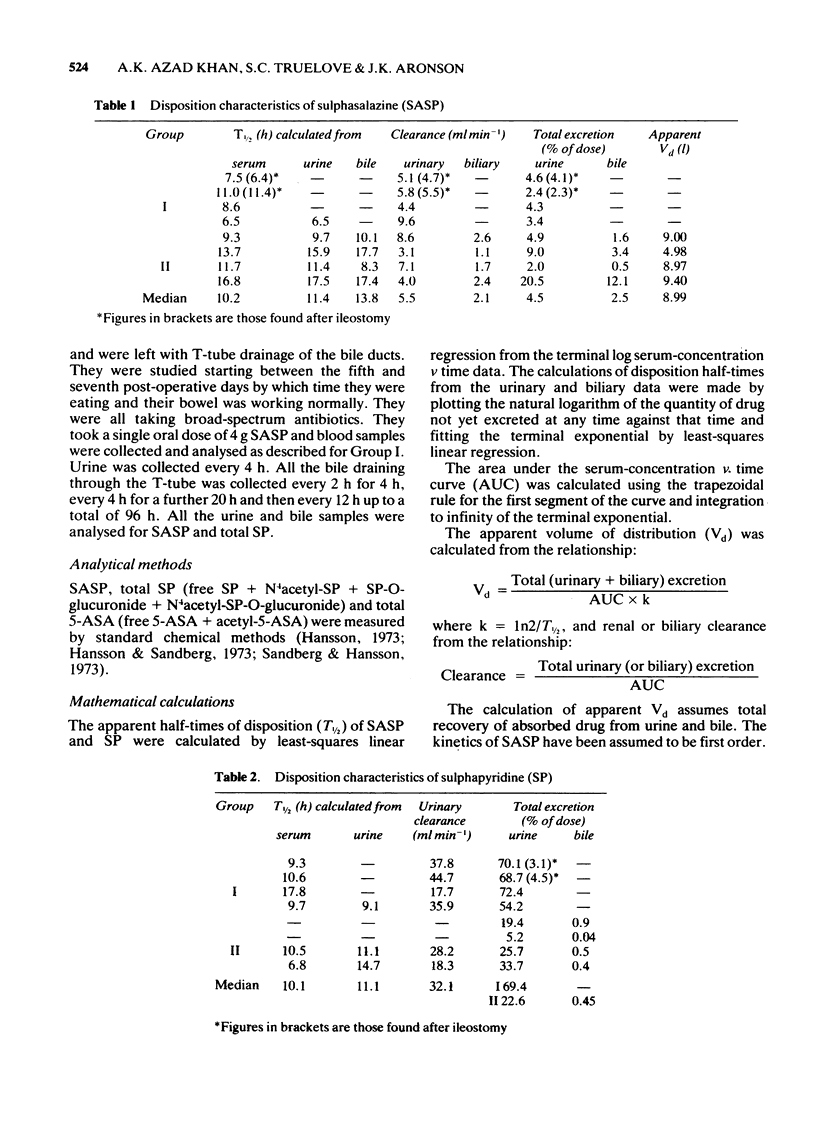
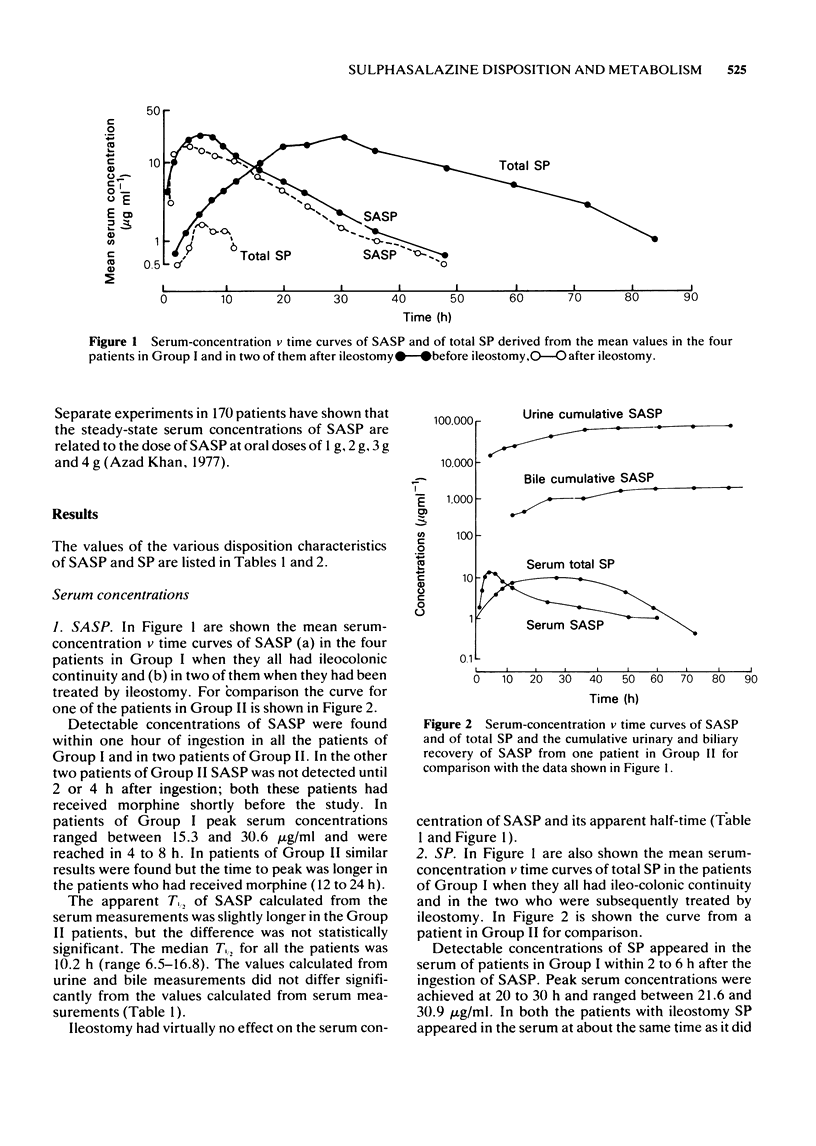
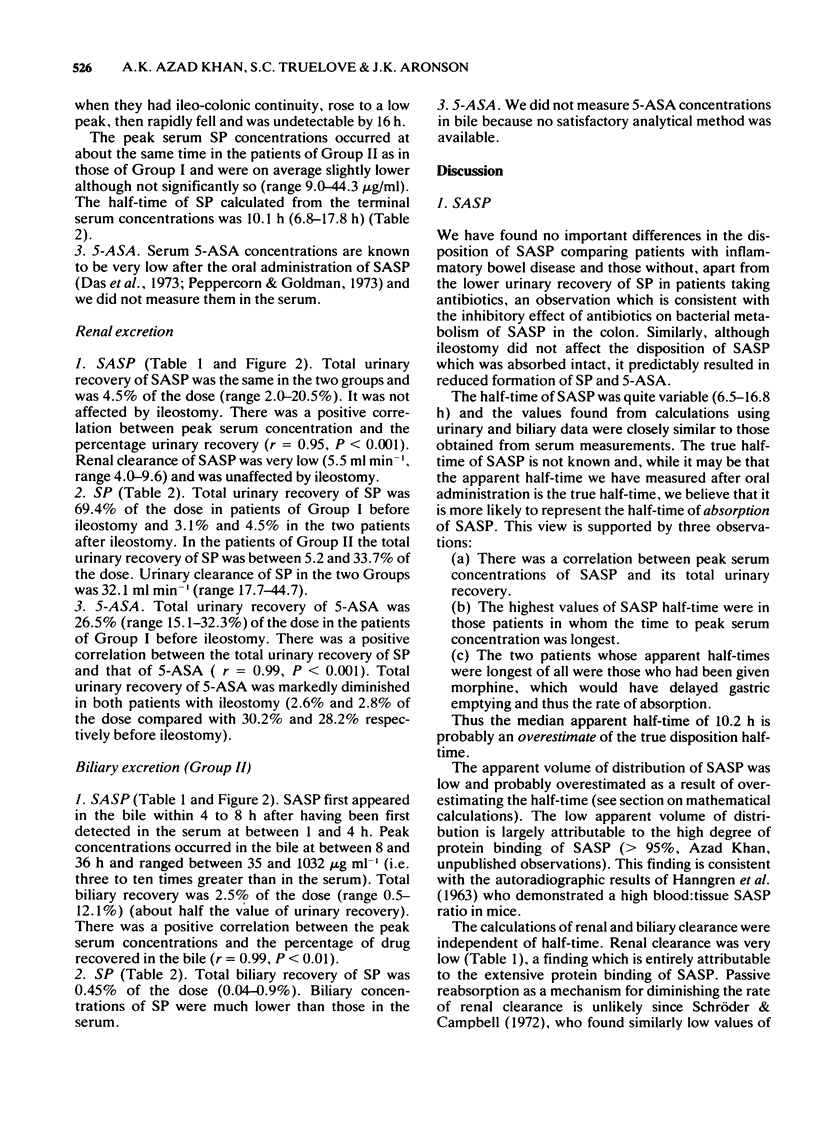
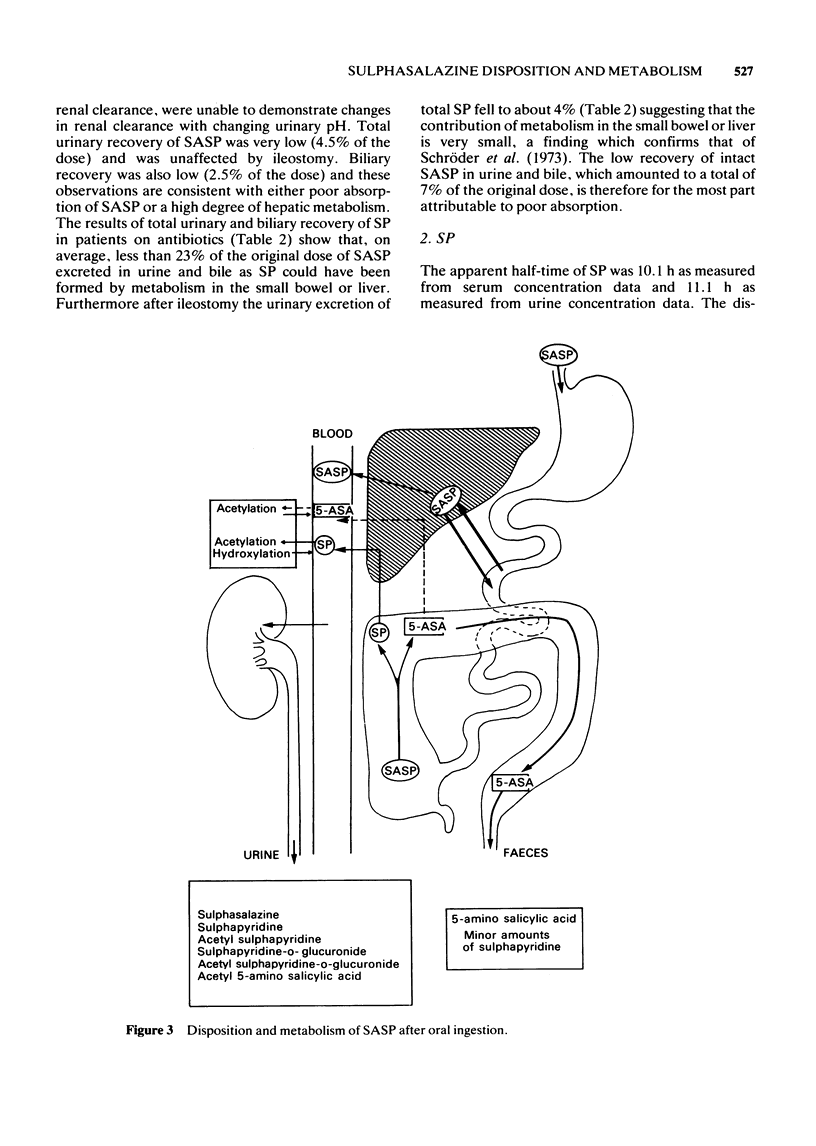
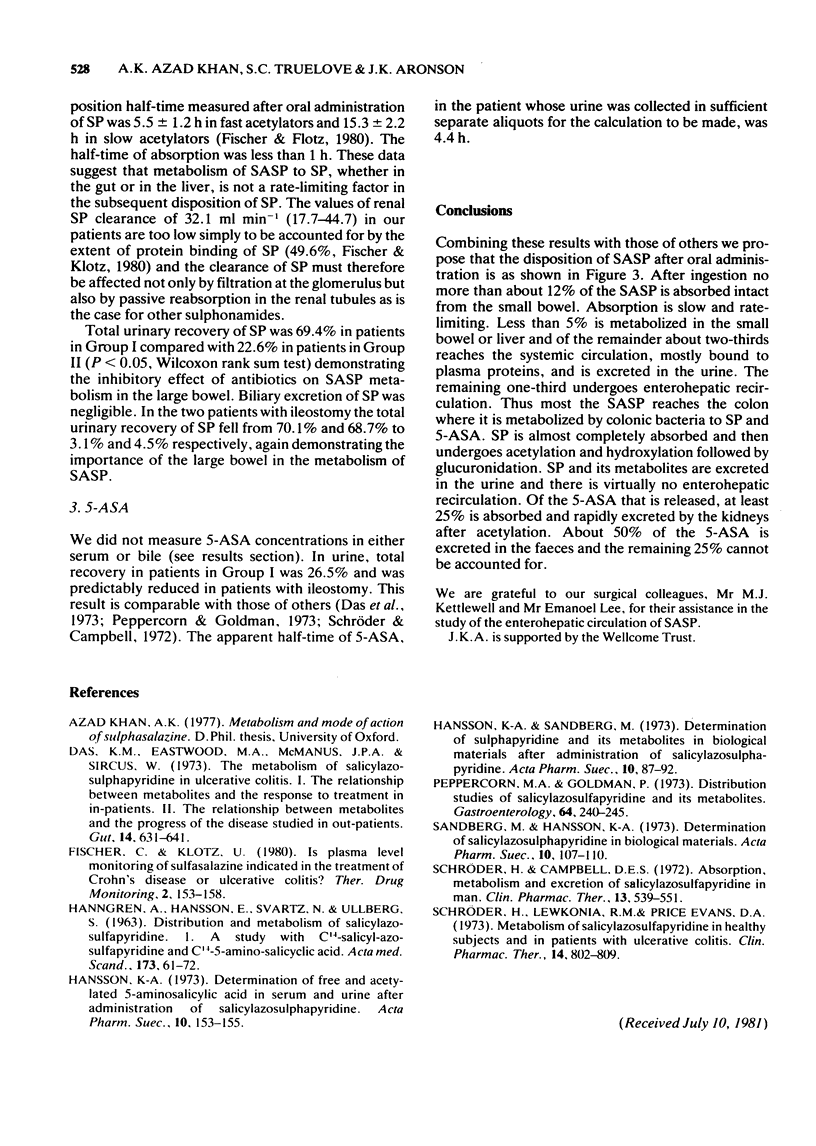
Selected References
These references are in PubMed. This may not be the complete list of references from this article.
- Das K. M., Eastwood M. A., McManus J. P., Sircus W. The metabolism of salicylazosulphapyridine in ulcerative colitis. I. The relationship between metabolites and the response to treatment in inpatients. Gut. 1973 Aug;14(8):631–641. doi: 10.1136/gut.14.8.631. [DOI] [PMC free article] [PubMed] [Google Scholar]
- Fischer C., Klotz U. Is plasma level monitoring of sulfasalazine indicated in the treatment of Crohn's disease or ulcerative colitis? Ther Drug Monit. 1980;2(2):153–158. doi: 10.1097/00007691-198004000-00009. [DOI] [PubMed] [Google Scholar]
- HANNGREN A., HANSSON E., SVARTZ N., ULLBERG S. Distribution and metabolism of salicyl-azo-sulfapyridine. I. A study with C-14-5-amino-salicylic acid. Acta Med Scand. 1963 Jan;173:61–72. doi: 10.1111/j.0954-6820.1963.tb16506.x. [DOI] [PubMed] [Google Scholar]
- Hansson K. A. Determination of free and acetylated 5-aminosalicylic acid in serum and urine after administration of salicylazosulphapyridine. Acta Pharm Suec. 1973 May;10(2):153–155. [PubMed] [Google Scholar]
- Hansson K. A., Sandberg M. Determination of sulphapyridine and its metabolites in biological materials after administration of salicylazosulphapyridine. Acta Pharm Suec. 1973 Mar;10(1):87–92. [PubMed] [Google Scholar]
- Peppercorn M. A., Goldman P. Distribution studies of salicylazosulfapyridine and its metabolites. Gastroenterology. 1973 Feb;64(2):240–245. [PubMed] [Google Scholar]
- Sandberg M., Hansson K. A. Determination of salicylazosulphapyridine in biological materials. Acta Pharm Suec. 1973 May;10(2):107–110. [PubMed] [Google Scholar]
- Schröder H., Campbell D. E. Absorption, metabolism, and excretion of salicylazosulfapyridine in man. Clin Pharmacol Ther. 1972 Jul-Aug;13(4):539–551. doi: 10.1002/cpt1972134539. [DOI] [PubMed] [Google Scholar]
- Schröder H., Lewkonia R. M., Price Evans D. A. Metabolism of salicylazosulfapyridine in healthy subjects and in patients with ulcerative colitis. Effects of colectomy and of phenobarbital. Clin Pharmacol Ther. 1973 Sep-Oct;14(5):802–809. doi: 10.1002/cpt1973145802. [DOI] [PubMed] [Google Scholar]


